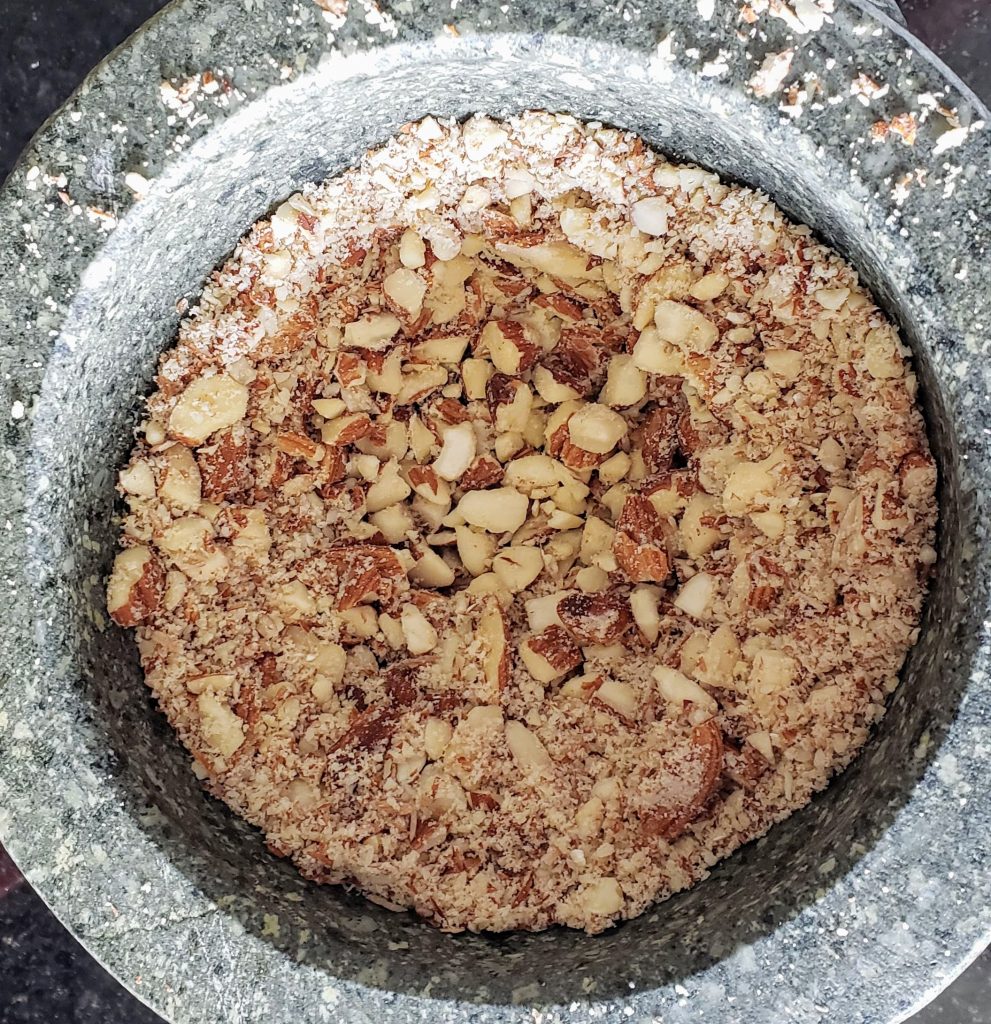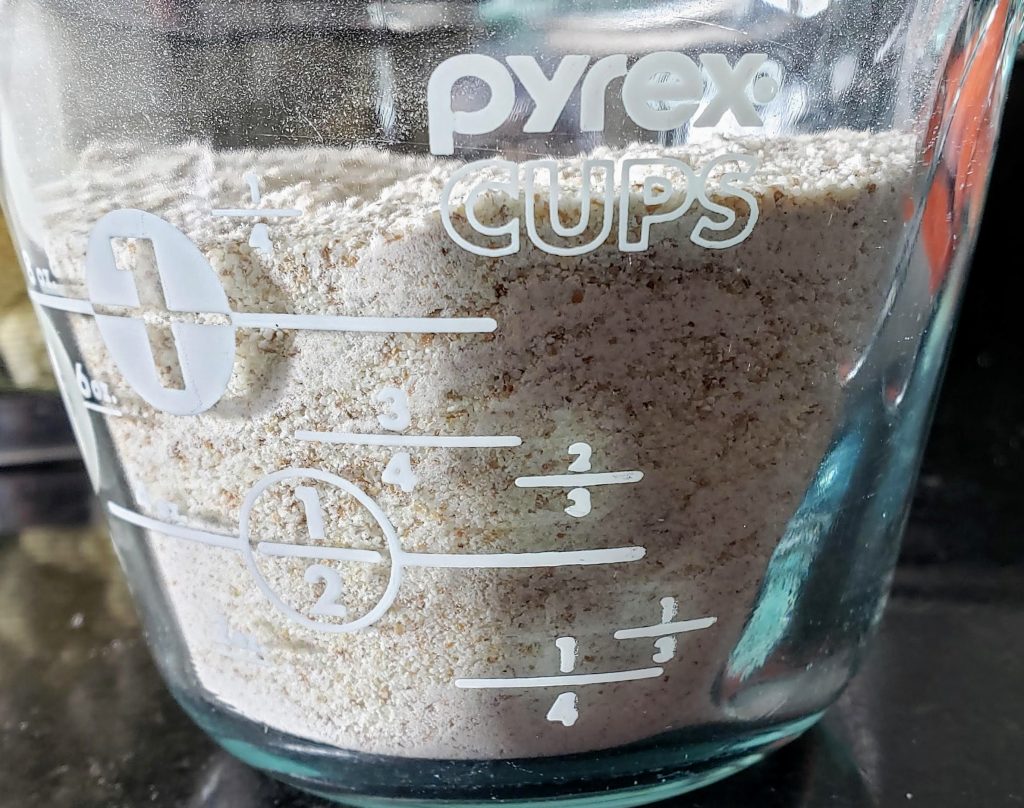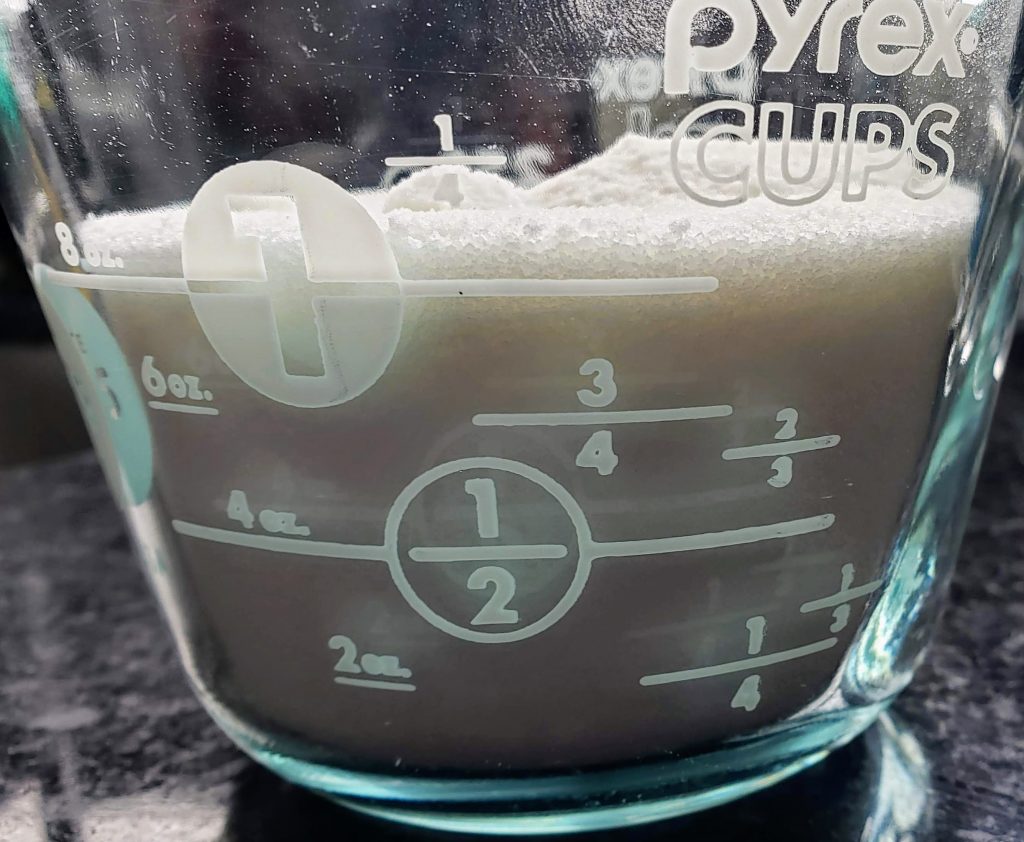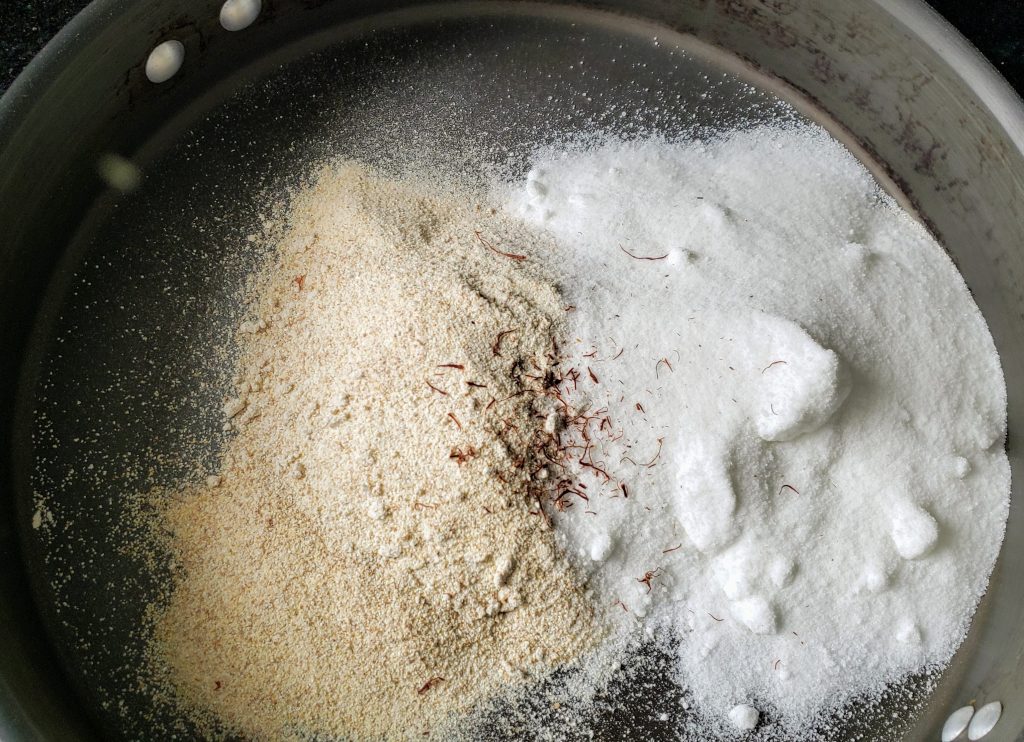Hindu and Sikh temples give out free food to all visitors on a daily basis, regardless of their religious affiliation. In Hindu temples or Mandirs, ‘Prasad’ comes in the form of this sweet porridge and/or an Indian dessert or fruit and nuts. In Sikh temples or Gurdwaras, you get ‘Kada’, a whole wheat-based sweet porridge similar to Halwa, and ‘Langar’, a full vegetarian meal that begins with appetizers like samosas and ends in a mouth-watering dessert.
Sooji Ka Halwa (a sweet porridge that is Farina based) is served in Mandirs whereas Kada (a whole wheat flour-based sweet porridge that is blessed) is served in Gurdwaras. As a result, both Halwa and Kada are yet another of my childhood comfort foods as I visited both institutions weekly, if not more.
My mother, a devout Hindu, prepared Sooji Ka Halwa frequently at home when celebrating the many Hindu religious festivals.
The traditional ratio of Farina or Wheat Flour:Sugar: Water is 1:1:4. Also, anywhere between 4-8 tablespoons of butter would be used when toasting the grains. The resulting texture is more velvety and the consistency is denser when you use more butter.
Here’s where I deviate from tradition:
- Normally, I make my Halwa with both Farina and whole wheat flour in a 1:1 ratio, however, I wanted to finish up my Farina to make space in my tiny refrigerator. Regardless, the same total measurements apply when using only whole wheat flour or only Farina;
- I use a LOT less butter (oil, if you are Vegan); and,
- I cut down on the sugar a bit.
Hands-on time: 15-20 minutes
Cook time: 15 minutes
Yield: 6-8 servings
INGREDIENTS
- 3/4 cup Farina/Cream of Wheat/Sooji
- 1/2 cup whole wheat flour
- 1 cup sugar
- 1/3-1/2 cup ground almonds or almond meal flour
- 2 tablespoons of butter or vegetable oil
- *1/2 teaspoon ground cardamom
- *a few threads of saffron, optional
- 5 cups water
INSTRUCTIONS
1. Pre-heat oven to 350 F.

crushed almonds 
2. Measure out the Farina and the wheat flour and place it on a jellyroll pan or a cookie sheet with a small lip.
3. Place the tray in the oven to toast the grains until they are light brown. It’ll take 12-15 minutes. At 7 minutes, remove the tray from the oven and stir to ensure even browning.

A mixture of Farina and whole wheat flour 
Appearance before baking 
Toasted until light brown
4. Melt the butter in a 5-quart pot and toast the almond meal or ground almonds.
5. Add the toasted farina and wheat flour. Add the sugar, cardamom powder, and saffron.

sugar 
All dry ingredients and butter
6. Remove the pan from the heat and slowly add the water one cup at a time. Stir well in between each addition to prevent lumps.
7. Place the pan back on the burner and cook the Halwa over medium heat until it thickens. Stir constantly. It will take 10-15 minutes. I like it a bit creamy as opposed to a dense texture. It’s up to you on how much water to dry off after the grains have swelled up and softened.
8. Serve warm. It makes for a lovely breakfast cereal that’s much tastier than oatmeal or granola. It makes an excellent accompaniment for Kale Chole (Click on the link to see the recipe) as the contrasting textures and flavors marry well.

After all the water has been added 
After 8 minutes 
Final product
Note:*These ingredients may be purchased at your local Indian grocer. For this reason, I have given you the name of the spice both in English and Hindi as that is the name (written phonetically in the English alphabet) you will find it under when you go shopping.
Spices impart specific flavors and aromas that enhance the overall flavor of the dish when used correctly. Moreover, they have a lot of health benefits. The list below specifies:
- The name of the spice;
- The flavor(s) it imparts;
- How and when it may be used; and, finally,
- It’s health benefits.
Hari Ilachi (green cardamom) – Sweet, slightly astringent. Green cardamom can be added early on in the cooking process. It is used in both sweet and savory dishes. Green is a major component in Chai Masala. It is used to season drinks such as Mango Lassi. It complements dairy-based desserts. It is used in making biriyanis and lamb or goat curries. Cardamom is chewed whole as a breath freshener. It helps to add a little sugar in the blender to help grind cardamom into a fine powder. Cardamom is a natural bactericide and helps prevent cavities; helps lower blood pressure; aids in digestion; and, helps clean out the urinary tract, bladder, and the kidneys as it is a natural diuretic.
Kesar (saffron) – Aromatic and floral, imparts a buttery hue to foods. Soak it in milk or water to help release its essence. You don’t need more than a few threads to impart flavor and color.Great in meat dishes, Biryanis and Paella. Great in cakes, cookies, and ice cream. Wonderful in milk-based desserts like Kheer, Rasmalai, Kulfi, and puddings. A capsule form is used to treat Parkinson’s disease, memory loss, and inflammation in Japan. When mixed with licorice and milk, it makes a topical ointment used to treat hair loss caused by alopecia. A tremendous anti-oxidant. Researchers in Mexico discovered saffron has the ability to inhibit human malignant cells while having no effect on healthy cells. It also stimulates the production of immune cells that fight cancer.
Written by Anju Kapur of Anju’s Table. All content and images on this site are copyright protected. Please do not use any of my images without my permission. Should you wish to share this recipe on your site, please add a link to this post as the source.

[…] no onions or garlic. There are four components in this meal: Puri (fried, unleavened wheat bread), Sooji Ka Halwa (sweet farina porridge), Kale Chole (savory black chickpeas), and Aloo (potato […]
[…] I should make this stew more often because it’s one of the few foods that all three of my kids like. It’s delicious, fast, and easy too. Inexplicably, I solely make it for religious feasts alongside Puris, Kale Chole, and Sooji Ka Halwa. […]